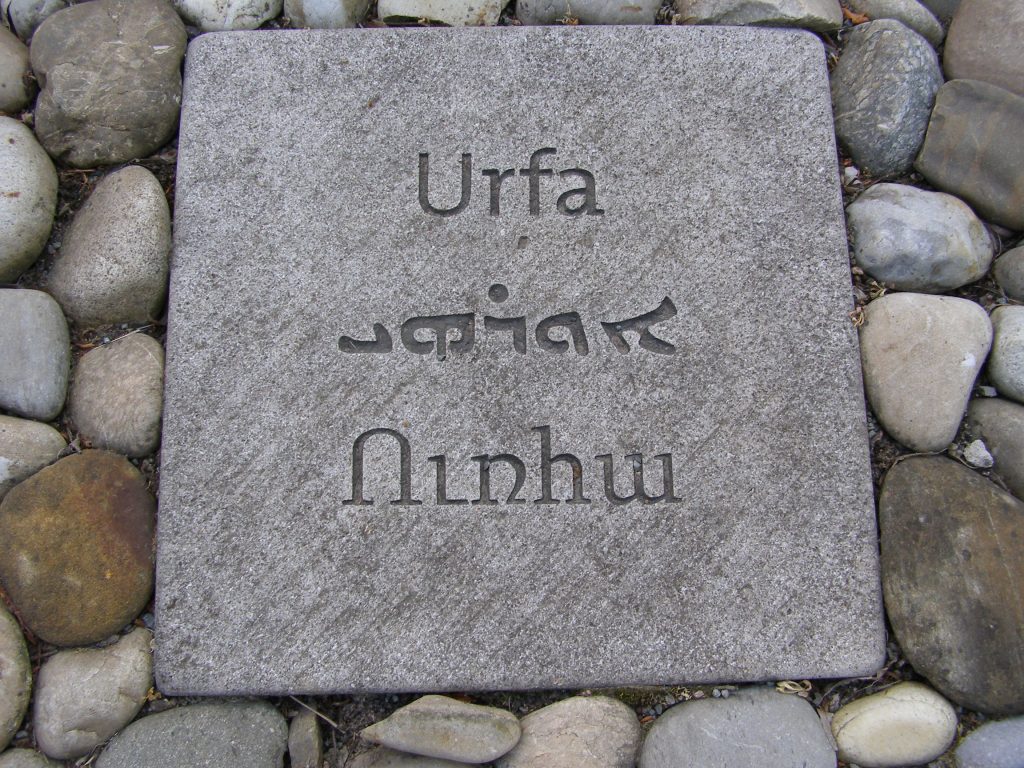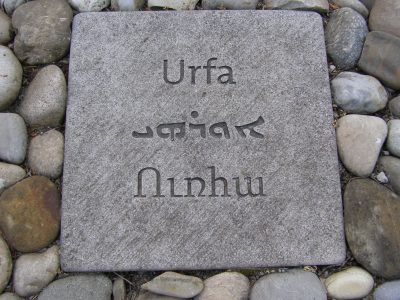
Toponym
Although the site of Urfa has been inhabited since prehistoric times, the modern city was founded in 304 B.C by Seleucus I Nicator and named after the ancient capital of Macedonia, Ἔδεσσα – Édessa. During the rule of Antiochus IV Epiphanes (175–164 B.C.) the city was named Callirrhoe or Antiochia on the Callirhoe (Ancient Grk.: Ἀντιόχεια ἡ ἐπὶ Καλλιρρόης). During Byzantine rule it was named Justinopolis. Prior to Turkish rule, it was often best known by the name given it by the Seleucids, Edessa.
Şanlı means ‘great, glorious, dignified’ in Turkish, and Urfa was officially renamed Şanlıurfa (‘Urfa the Glorious’) by the Turkish Grand National Assembly in 1984, in recognition of the local resistance in the Turkish War of Independence. The title was granted following repeated requests by the city’s members of parliament, eager to receive a title similar to those given to neighbouring cities Gazi (Veteran) Antep and Kahraman (Heroic) Maraş
Administration
Under the Ottomans Urfa was initially made center of Raqqa (Urfa) Eyalet. Later, the sancak, previously called Birecik became part of the Aleppo Vilayet. In 1892 the sancak consisted of the four kazas Urfa, Birecik, Rumkale (Hromgla/Hromkla) and Suruc. In 1908, the sancak was detached from the province of Aleppo to become an autonomous mutesarrifat.
Before World War I Urfa belonged to the Aleppo Vilayet, after that Aleppo was Syrian. Urfa remained de facto Turkish, although it became part of Syria according to the Treaty of Sèvres (1920). Due to the success of Turkish War of Independence, Maraş, Antep and Urfa sancaks of former Halep (Aleppo) Eyalet remained in Turkey after 1921.
The British occupation of the city of Urfa started de facto on 7 March 1919 and officially de jure as of 24 March 1919, and lasted until 30 October 1919. French forces took over the next day and lasted until 11 April 1920, when they were defeated by local resistance forces before the formal declaration of the Republic of Turkey on 23 April 1920.
Population
According to the Armenian Apostolic Patriarchate of Constantinople, the Armenian pre-war population of the sancak of Urfa was 41,740. Of these, the vast majority of 36,448 lived in the kaza of Urfa.[1]
In 1918, Woodrow Wilson, the American president at the time, requested information on the ethnic demographics of the region. Through an urgent request from the Ministry of the Interior, in late 1918, the mutesarrifat of Urfa reported that there were roughly 33,000 Turks, 12,000 Arabs, 27,000 Kurds, 5,500 Armenians, 3,000 Assyrians, and 500 Jews in the central Urfa kaza (which also includes the settlements in vicinity of the city), totaling to almost 81 thousand people.[2]
After the establishment of the Republic of Turkey, most of the non-Muslims left the city. The urban Muslims, mainly Turks, migrated to other parts of the country, and a large rural population (mostly of Kurdish, Arab, and to a lesser extent Turkmen origin) settled in the city. Today, the city is mainly composed of Arabs and Turkmens, along with some Kurds.[3]
